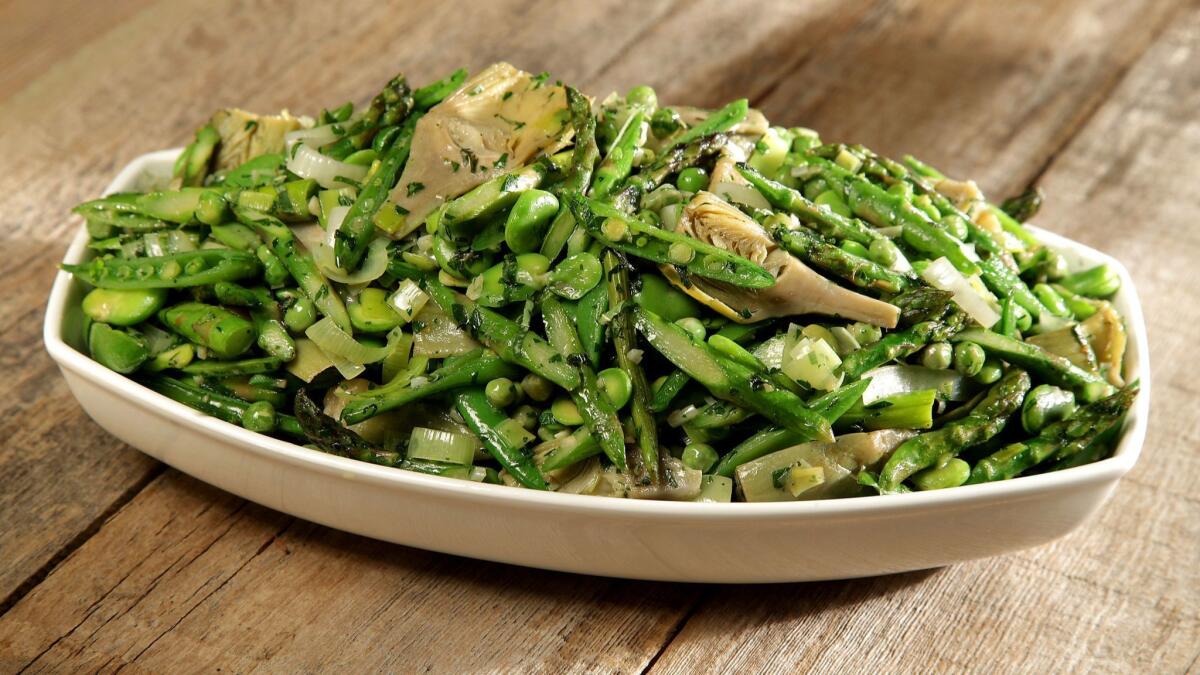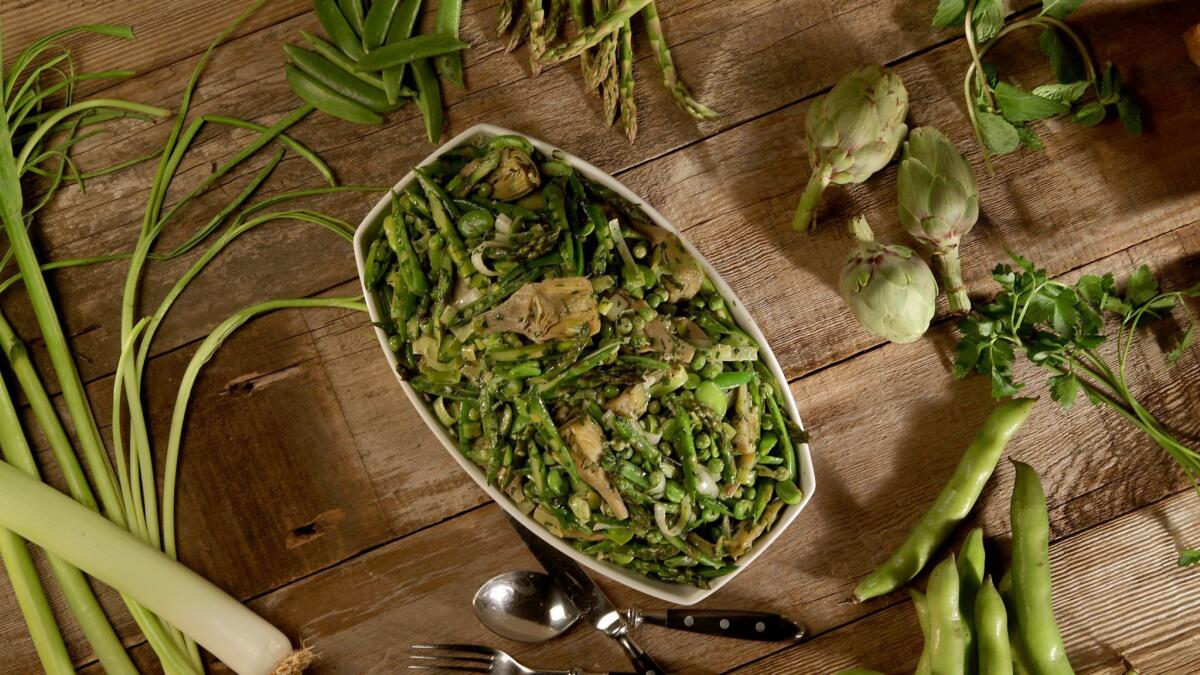Cucina Italiana: Garmugia, an easy vegetable dish that translates spring to your bowl

- Share via
I live in a place where nearly everything is available year round — so you wouldn’t think that a salute to spring in an emblematic dish would necessarily be reason for celebration. If we’ve had some rain in winter — which we recently, finally, got — then spring in Southern California means the intoxicating smell of jasmine flowers and the new blossoms on all our citrus trees. All of this aromatic sweetness is echoed in the seasonal vegetables that appear in our markets. From grassy to vegetal, a mix of flavors mingle with sweet sugars and a hint of bitterness. Some would say that really we just have two major seasons here, spring and summer. Somehow summer vegetables with their reds and oranges get more play, but I find spring to be an astonishing time to eat seasonally.
There are artichokes, asparagus, leeks, green garlic, fresh peas, fava beans, sugar snaps and lettuces and herbs in a dizzying variety. They all meet in garmugia Lucchese and vignarola Romana, two nearly identical soups from Tuscany, in the case of garmugia, and Rome for vignarola. The word vignarola is dialect for ortolano, or greengrocer. Fittingly the word garmugia appears to come from the Italian germoglio, meaning bud or sprout, so also a rebirth of life in the spring. The Roman recipe is said to be linked to Velletri, just southeast of Rome in the Alban Hills where historically there were once extensive vineyards. The legumes were interplanted with the vines and harvested in spring. This is one of those dishes you can easily imagine being cooked in the fields over a small wood fire — all you’d need is a pan and some olive oil.
The dish is such an Italian way to celebrate a season — just take all the vegetables you might find in the garden at the same time and toss them together in a single pot. Garmugia, like most dishes in these regions, is the product of poor farmers making the most of what they had. Imagine what a bowl filled with three or four or five different green vegetables must have looked like to a population of workers barely eking out meals made mostly of water and bread with a handful of grain or pulses and a few hardy winter greens thrown in as the winter wore on.

Except for the addition of pancetta or guanciale, these bowls are mostly filled with vegetables. There is just enough broth to allow you to dip some bread. In my version they become a sauté. I forgo the broth because part of the delight of these spring vegetables is the textures — from snappy to yielding — which are best showcased with just a quick sauté. (The artichokes take a bit longer.)
This might be my favorite Italian dish for revealing the transparent nature of the Italian kitchen. I’ve always thought that the reason for the popularity of Italian cooking is how simple and direct the flavors are — there’s no sauce, no opaque ingredients. In this dish everything is green, albeit of different hues. The shapes and forms of the plants are various, from the complicated artichoke, the layers of asparagus tips to the hidden geometry of peas. Garmugia is simply a combination of the available harvest — with extra-virgin oil still grassy and spicy from the previous year’s late fall pressing. My version is a bit different, not a soup but rather a sauté of whatever the market has that’s green, tender and bursting with vigor.
In Southern California of course we don’t wait for the first shoots of green to push their way through snow-covered fields. Even in this year of drought recovery, there is plenty of green to be found at the markets. And yet, pick up a fat sugar snap pea from Thao Family Farms — or any number of our local market farmers — and the crunchy, sweet bite is quick confirmation that, yes, we have spring here too. This year’s moment of springtime recognition came at chef David Chang’s new Chinatown restaurant Majordomo when I realized that I was compulsively consuming the plates of crudites and sugar snap peas instead of focusing on the more elaborate meat dishes, as were most of my dining companions.
You could say that those vegetables snapped me out of a wintertime funk — and that’s what they do every year, if we pay attention.
More to Read
Eat your way across L.A.
Get our weekly Tasting Notes newsletter for reviews, news and more.
You may occasionally receive promotional content from the Los Angeles Times.










